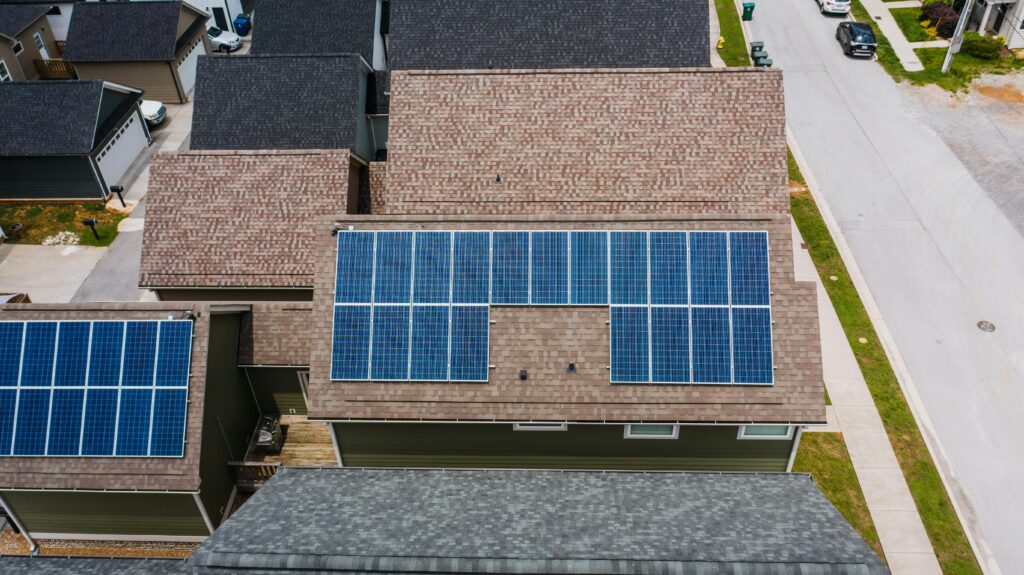The buildings we live and work in are core aspects of our society. They support our day-to-day lives and ongoing well-being. However, our historic approach to creating these structures negatively impacts the environment.
Technology is already vital to the industry, but new advancements in tech and practices are driving more eco-friendly approaches to construction. These elements ensure projects don’t cause unnecessary damage and buildings are created for a future in which the climate is a priority. It’s worth looking a little closer at some of the efforts to boost the sustainability of the construction industry.
Adopting Green Construction Tech
There are various developing trends in green construction innovations. Some of these tools are relatively passive yet impactful. For instance, smart glass tints in reaction to light conditions, letting in more or less light and heat, depending on the time of day. This reduces reliance on mechanical heating and cooling systems. Similarly, cool roofs reflect more sunlight than traditional materials, reducing the energy consumption from air conditioning.
At the same time, there are significant leaps in more active green construction technologies. Artificial intelligence (AI) driven quantity surveying software uses machine learning algorithms to assess projects and accurately predict materials needs. This reduces the potential for waste.
Internet of Things (IoT) devices also play a role in construction. Sensors can collect and distribute data on electricity consumption during projects and even help control automated tools. This boosts the energy efficiency of development.
Effectively adopting construction tech is about understanding that a combination of passive and active tools can make for a more holistically green project. Keeping on top of these advances and frequently researching changes in adoption and application can empower developers to make more agile green decisions.
Using Alternative Materials
One of the primary technological advancements in eco-friendly construction practices is the widespread availability of more sustainable building materials. This is an important development as building materials can impact the well-being of the planet in a variety of ways.
Some of the alternative materials now being used include:
- Bio-based insulation: Traditional insulation materials are often based on fiberglass or polyurethane foam. While these are effective, they’re also not particularly sustainable synthetic substances. Now, there’s a growing range of insulation materials made from biological technologies, including mycelium. These provide robust insulation while also being biodegradable.
- Recycled materials: Rather than using newly manufactured materials, many construction projects are making use of recycled building materials. This can include repurposed wood and stone from demolitions, as well as assets created from recycled plastics.
- Bamboo: There’s more recognition that some forms of bamboo can make for effective construction materials. This material is strong but still relatively flexible, with some believing it might replace manufactured materials such as steel. It also regrows relatively rapidly, making it a sustainable source of structural assets.
Excessive use of non-renewable raw materials puts pressure on the ecosystems they’re harvested from. Production processes to transport and transform these raw materials into construction assets can also result in harmful emissions and waste. By instead embracing sustainable alternatives, developers can take a more responsible approach to construction.
Embracing Energy Advancements
Among the priorities for sustainable construction is for projects to be smarter about energy use. This is a serious challenge, as changing climate conditions are putting more pressure on grids. As a result, it’s expected that there will be more power outages related to pressure on infrastructure. When projects prioritize energy efficiency, they’re not just taking a more responsible approach to construction, but they’re also ensuring buildings can withstand those future threats.
Perhaps the most effective approach to energy conservation is to install solar power systems as part of construction projects. Contractors can get started with solar panels by taking courses through local community and technical schools that guide installation for the scope of construction projects they want to handle. From here, they should be involved in assessing the property design from the outset to identify the potential spaces for solar arrays and the best positioning for them. It’s also worth noting that some local governments offer tax incentives for solar power that contractors may be able to take advantage of for these projects.
Of course, it’s still important to be aware of energy use during the project itself. In some instances, contractors will be able to install ground-mounted solar arrays in open areas that can generate power for battery-operated assets. They can also plan the construction process to make the most of daylight hours — avoiding the need for floodlights — and invest in electric rather than diesel vehicles and tools.
Prioritizing Environmental Stewardship
In addition to eco-friendly tech and materials, there’s value in the commitment project managers and contractors make to organizing green projects. In essence, professionals are using tools, techniques, and resources to demonstrate environmental stewardship without compromising on quality or safety.
For instance, green certifications are a way to rate buildings based on the number of sustainable initiatives used in the project. Various organizations provide certification, but the most prominent is the U.S. Green Buildings Council’s Leadership in Energy and Environmental Design (LEED) program. By aiming to get these certificates, developers are committing to the most holistically sustainable project possible.
Additionally, project managers can prioritize environmental stewardship by strategizing waste reduction for projects. This begins by assessing material needs using building information modeling (BIM) software to get accurate predictions of the assets required. BIM helps avoid over-ordering, which leads to waste.
A Sustainable Future
Innovations in construction are helping to drive more sustainable approaches to projects. Some of these involve using green new materials, while others lean into the advances in renewable energy. Construction professionals need to keep exploring the potential of green advances that continue to come down the pipeline. The better such tools can be integrated into projects, the better the outcomes are likely to be for businesses, homeowners, and the planet alike.




Comments are closed.